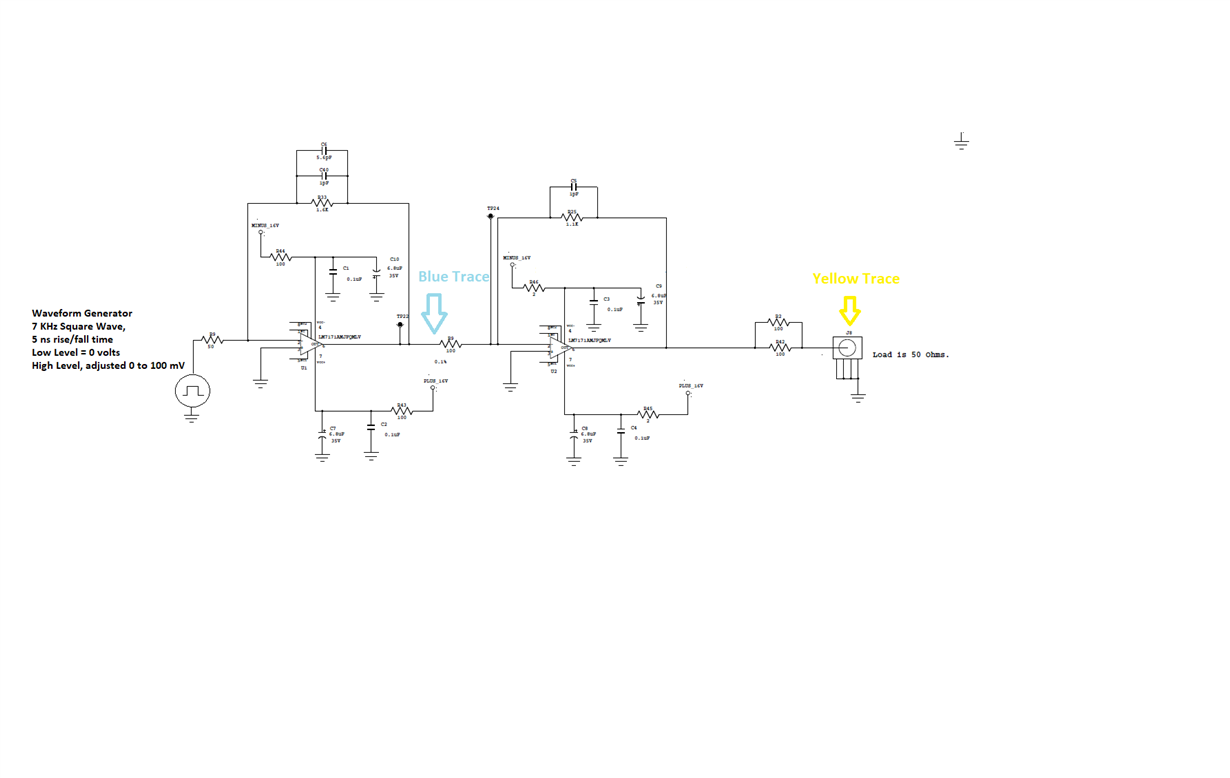I am suprised by the slow rise time of the signal at the output of the LM7171 in a circuit that I have built.
I am cascading two LM7171's in a circuit. I have built the circuit (four layer PCB, separate ground plane, separate power plane) and am testing it now.
Here are the details about the circuit:
Power supplies: +/-16 volts (in order to get 10 volts out at 100 mA from the 2nd-stage LM7171)
1st stage:
1. Driven by a waveform generator (WFG) with a 50 Ohm output resistance. WFG rise time is 5 ns (measured), frequency is 7 kHz. Square wave low level is always 0 volts. High level is adjusted from 0 to approximately 50 mV and the output of the 2nd-stage is monitored while the WFG is adjusted.
2. Inverting
3. Feedback resistor = 1.1 kOhms, feedback cap (to stabalize) = 6 pF (not including parasitic board capacitance which is probably around 0.2 pF).
4. Op-amp is LM7171.
2nd Stage:
1. Driven by first stage. There is a 100 Ohm resistor between the 1st-stage output and the inverting input to the 2nd-stage (gain = -10 therefore).
2. Inverting
3. Feedback resistor = 1 kOhm, feedback cap = 1 pF.
4. Output drives a 50 Ohm scope. Source resistor is 50 Ohms.
5. Want output to be 0 to 10 volts from the 2nd-stage LM7171 (0 to 5 volts at the scope input).
Observations:
1. When the WFG is adjusted so that the output of the 2nd-stage is at its max (10 volts), the rise time is 125 ns, much more than I had expected.
2. The output of the 1st-stage during the state described in Observation 1 above is a square wave going from 0 to -800 mV.
3. The output in Observation one has a smooth single RC time constant look to it, indicating to me that the LM7171 2nd-stage is not operating in the large-signal domain.
4. If I increase the WFG High level such that the 2nd-stage output voltage is 11.2 volts and the output of the 1st-stage LM7171 driving it is 0 to -1.5 volts, the rise time diminishes to 52 ns and the form of the 2nd-stage waveform looks more like that which I would expect from an op-amp operating in the large-signal domain (i.e., the input is overdriven and all the "tail" current is charging up the compensation capacitor). I see the characteristic single-hump overshoot indicative of this behaviour.
My questions are:
1. Why does it take so much input voltage to overdrive the 2nd-stage LM7171?




